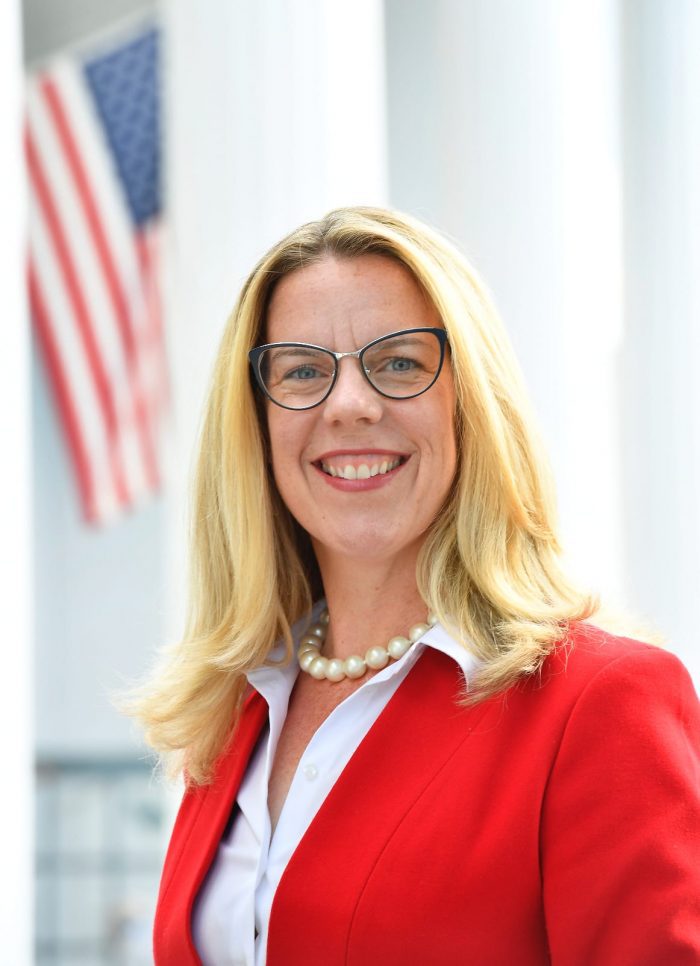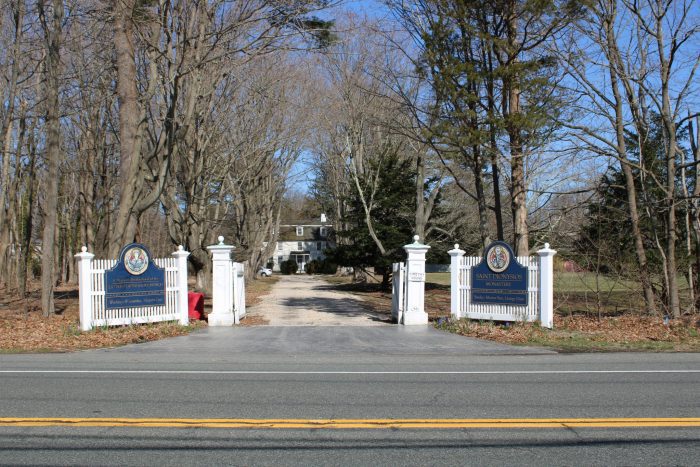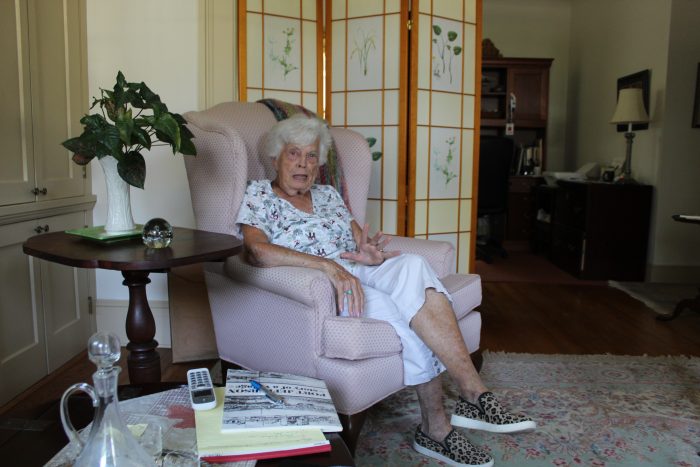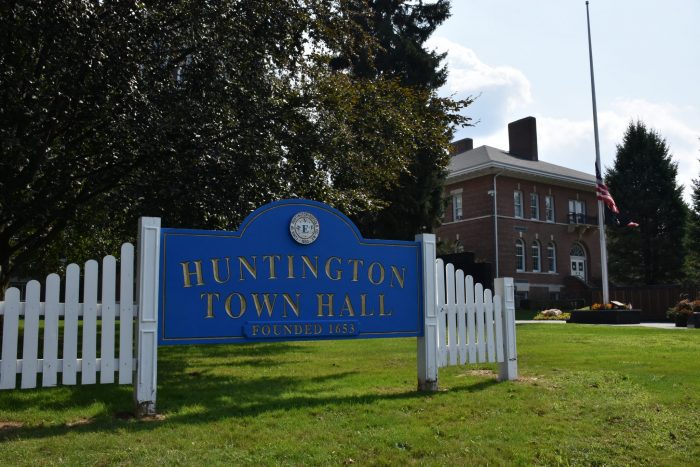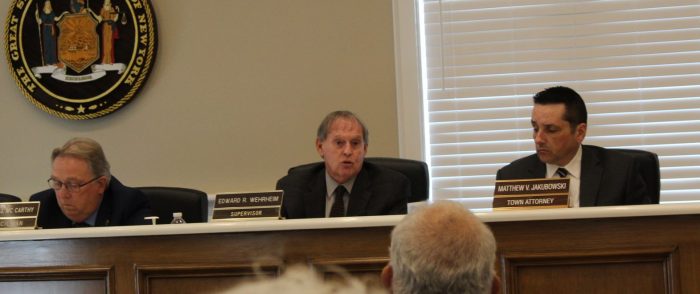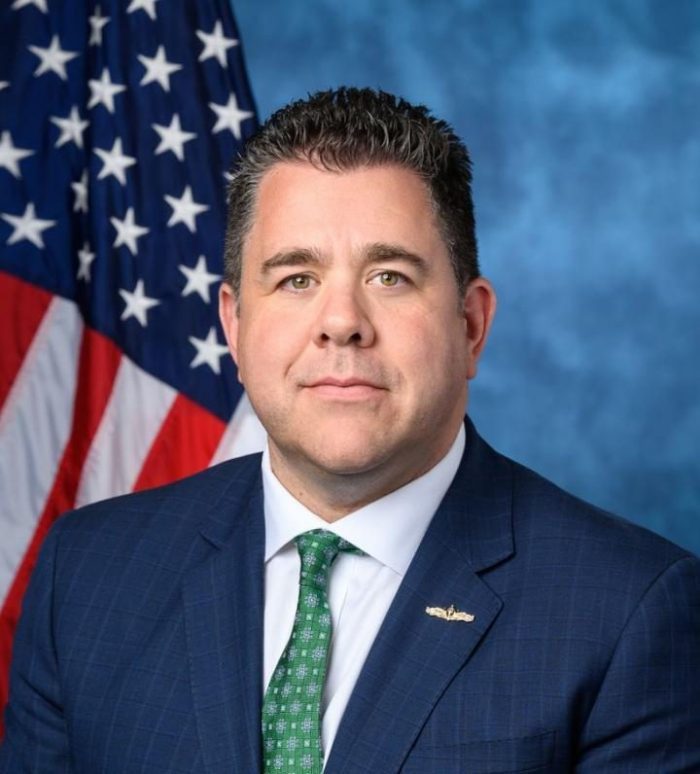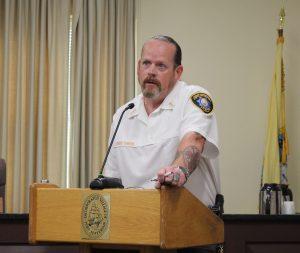Suffolk County Legislator Kara Hahn (D-Setauket) resigned Monday, Aug. 14, vacating her seat in the county Legislature to become New York State Parks deputy regional director for the Long Island region.
Hahn entered the county Legislature in 2012 and could not pursue reelection because of 12-year term limits for legislators. Hahn’s 5th Legislative District spans Three Village, Port Jefferson, Port Jefferson Station/Terryville, Belle Terre and parts of Mount Sinai and Coram.
In an exclusive interview with TBR News Media, she reflected on her time in county government, summarizing legislative victories and offering an optimistic outlook.
‘The tones’
A lifelong resident of the county’s 5th Legislative District, Hahn said she grew up watching her parents, both of whom she characterized as energetic and active within the community.
“My dad, a proud Army man and veteran, was a volunteer firefighter in the Stony Brook Fire Department,” she remembered. “Growing up, you’d hear that alarm go off almost every night — They called it ‘the tones’ on the radio. It didn’t matter if there was a family birthday party, a weekend or late at night, he would answer that call.”
Hahn’s mother was a civic leader, working within the community to resist the development of a property across the street from their house. The daughter remembered her mother picking up trash on the street, noting “she cared so much” about the look and feel of the local area.
These two examples formed the basis on which Hahn had modeled her public service career. She described her parents as “a real inspiration to me.”
Road to the county Legislature
Before entering elective office, Hahn received her degree and pursued a career in social work policy. She served as president of the Civic Association of the Setaukets and Stony Brook, the precursor of today’s Three Village Civic Association.
Hahn spent years in various staff positions within the county Legislature, first as press secretary for the late Presiding Officer Maxine Postal and later as chief of staff for former Legislator Vivian Viloria-Fisher. She worked for nearly six years as director of communications for the late Presiding Officer Bill Lindsay.
Facing term limits, Viloria-Fisher approached Hahn in 2012, asking her to make a run for her seat. Hahn was elected that year and reelected in five successive county elections. The legislator was elected to serve as the Legislature’s majority leader from 2016 through 2019 and was chosen as deputy presiding officer for 2020-21.
She made a bid to run for the Democratic nomination for New York’s 1st Congressional District in 2022, but withdrew.
Opioids
Given her background in social work, Hahn considered her efforts combating the opioid epidemic in Suffolk County as “my most impactful.”
“One of the first things I worked on in 2012 was to put Narcan into our police sector cars,” she noted. “Now, Narcan is a household name,” but “back then, nobody knew” the benefits.
“It was such a simple tweak,” she added. “It didn’t take a huge policy vision and an immense plan. It was a simple step to put a lifesaving drug in the hands of those who arrive on the scene first.”
Hahn said the Narcan initiative saw immediate success, saving “thousands of lives through the years” and catalyzing her later addiction prevention work.
Following this initial policy win, Hahn worked with the Long Island Council on Alcoholism and Drug Dependence to create a training program for athletic coaches to recognize the signs and symptoms of addiction. Her office also recommended new protocols for emergency rooms, among other outreach and prevention initiatives.
Environment, parks access
Hahn said environmental conservation was another area of focus during her time in the county Legislature. She suggested open space preservation, water quality protection and single-use plastic reduction as core tenets of her environmental policy agenda.
She added that expanding access to county parks had been among her proudest efforts within the county government, notably at McAllister County Park in Belle Terre.
“There was no parking lot” at McAllister, she said. “So the only people who could use the county park were folks who had a boat or anyone who could walk from Belle Terre.”
The former legislator added, “It’s really the thing I got thanked for the most — adding that parking lot.”
She said the modernization of Forsythe Meadow County Park in Stony Brook, including constructing a parking lot and walking trail, had expanded the use of that county complex.
“Nobody could use it before,” she said. “But now there’s a big beautiful field with a bench under the tree,” adding, “I hope one day, we’ll be able to connect that with Stony Brook Village.”
Hahn said restoration of Old Field Farm had similarly brought more residents to the county park there.
Tough choices
The departing county legislator expressed gratitude to the many people who she had worked closely with during her tenure.
“I’m just so grateful,” she said. “So many great people worked with me, helped me and gave me great ideas.”
Hahn reflected fondly upon the frequent collaborations she shared along the way: “I think that’s when it feels the best — when the community comes to you, says ‘We have a problem,’ and then you work together to come up with a solution.”
She admitted that there were several trials along the way, namely the dissensions and bitterness fomented during political campaigns.
“The politics was hard,” she stated. “I don’t like having to make it about me come campaign time … so campaigning is hard, but it’s part of the process.”
She noted that budgets have represented a perennial challenge for the county government, and raising tax revenue can be difficult.
“We had to make some tough choices along the way,” she said, citing the John J. Foley Skilled Nursing Facility closure in Yaphank, raising taxes on the police district line and increasing some fees. “Those are hard choices,” she added.
The COVID-19 pandemic represented a major governmental, budgetary and public health challenge. However, three years after the height of the COVID lockdowns, Hahn suggested the county and greater community had largely recovered.
“The whole world turned upside down, but we are in a much better place than you would ever have imagined,” she said. “Those challenges were real, the decisions were hard, and I was honored to have the trust of our community to make them.”
Now leaving office, she maintained that there is still work to be done in countering the opioid epidemic, environmental degradation, mental health and other issues.
Transition
Hahn expressed optimism for her personal transition from county to state government, highlighting the prominent role parks have played during her time in public service.
“Facing the term limits, I was offered this job,” she said. “I feel like it’s the perfect next step for me to continue to serve our community, the Long Island region and the environment.”
During her nearly 12 years as a county legislator, Hahn spent five chairing the county’s parks and recreation committee. She referred to parks as “the heart and soul of every community,” their vital role underscored by the pandemic.
Parks are “a place of respite, peace and tranquility, often a place of recreation and escape from daily life,” she observed. “The pandemic made it clear how important they are to families and communities to have those spaces.”
She added, “I look forward to stewarding, protecting, managing, expanding access and caring for all the gems of the state parks we have on Long Island.”
Legacy
Speaking to her constituents directly, she shared her appreciation for their trust and confidence in her.
“It’s been the absolute honor of a lifetime to serve and be able to make a difference in this community that I love so much,” she said. “It’s hard to say goodbye, and that means it was an incredible experience.”
Like the examples set forth by her parents, Hahn said she viewed her service in the county government as answering the call.
“I hope people think of me as someone who truly cared and someone who truly made a difference,” she said. “I hope people found me accessible, approachable and responsive.”
She concluded by saying, “I really feel like I was able to make a difference and help people, and that is good for the soul.”

